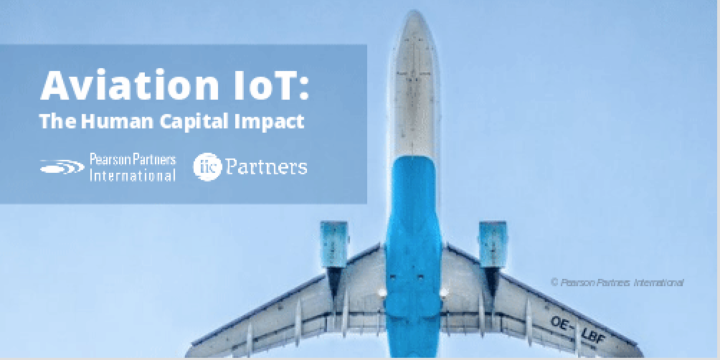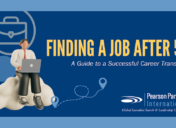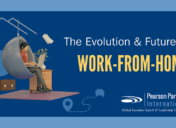The Human Capital Impact of the Aviation Internet of Things
IIC Partners’ Aviation Aerospace & Defense Practice Group explores the impact that the Internet of Things (IoT) and rise in connectivity will have on talent in the aviation industry.
 Featuring Pearson Partners Vice President Frank Morogiello
Featuring Pearson Partners Vice President Frank Morogiello
The Internet of Things (IoT) revolution has set its sights on the aviation industry. The advent of the “eEnabled airline” signals a departure from the traditional procurement practices exhibited by airlines where ‘boxes’ were simply bought and installed on aircraft. Every airline is unique, every supplier different, and IoT offerings are not products—they are solutions. To successfully navigate this frontier and reap the rewards of successful projects, both airlines and suppliers must rethink the composition of talent within the organization.
The Market Potential
The concept of aviation connectivity or “eEnablement” has matured over recent years to extend beyond the airframe. Passenger-focused solutions, such as inflight WiFi, have long dominated the airwaves, but as modern networked aircraft (e.g., A350, 787) start to reflect larger portions of the global fleet, airlines and suppliers must treat aircraft as nodes in the ecosystem of connectivity.
This ecosystem impacts the airline, not just individual aircraft. The rise of connected nodes, decreasing costs of bandwidth, and record profit levels impacting the global aviation sector are giving way to innovative approaches to IoT. Jay Carmel, a Senior Associate at the aviation consultancy Avascent, says “Ongoing improvements in how we generate, transfer, and analyze aviation data—due in large part to better sensors, more affordable networks and more sophisticated software—are creating new airline revenue streams and opportunities for cost savings that will shape the future of airline competition.” Connectivity is no longer a pure consumer-facing cost of doing business—it represents the potential for improved passenger experience, operational efficiencies and meaningful cost savings.
Read the complete white paper on the IIC Partners website.
Related Posts
- ← What Makes a CEO ‘Exceptional’? From McKinsey & Company
- Forbes: America’s Best Executive Recruiting Firms 2017 →














